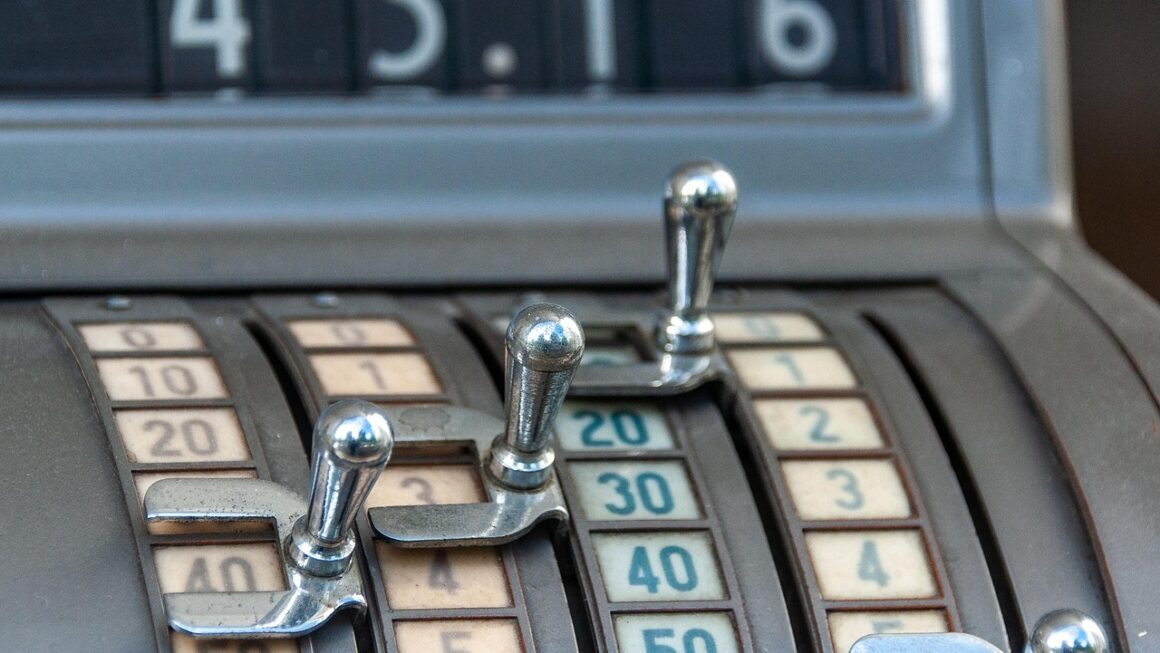Tired of feeling like your money is slipping through your fingers? You’re not alone. Budgeting can seem daunting, but it’s the cornerstone of financial security and achieving your financial goals, whether it’s buying a house, paying off debt, or simply enjoying more financial freedom. This guide provides practical budgeting tips to help you gain control of your finances and build a brighter future. Let’s dive in!
Understanding Your Current Financial Situation
Tracking Your Income and Expenses
Before you can create a budget, you need a clear picture of where your money is coming from and where it’s going.
- Income Tracking: Identify all sources of income, including salary, side hustles, investments, and any other regular earnings. Be precise; underestimate rather than overestimate.
- Expense Tracking: This is where many people struggle. Use a budgeting app, a spreadsheet, or even a notebook to meticulously track every expense for at least a month. Categorize your spending (e.g., housing, food, transportation, entertainment, debt repayment).
Example: Use Mint, Personal Capital, or YNAB (You Need a Budget) to automate expense tracking. Manually log cash purchases.
Benefit: Understanding your spending habits allows you to identify areas where you can cut back. A 2023 study by the Bureau of Labor Statistics found that the average American household spends approximately $66,928 per year, highlighting the importance of detailed expense tracking.
Identifying Spending Leaks
Once you’ve tracked your expenses, analyze where your money is going. Look for areas where you’re overspending or making unnecessary purchases. These are your “spending leaks.”
- Common Spending Leaks:
Unused subscriptions (e.g., streaming services, gym memberships)
Eating out too often
Impulse purchases
High energy bills (consider energy-efficient appliances)
Bank fees and charges
- Actionable Tip: Review your bank and credit card statements for recurring charges you might have forgotten about. Cancel subscriptions you don’t use.
Creating a Budget That Works for You
Choosing a Budgeting Method
There’s no one-size-fits-all approach to budgeting. Experiment to find a method that aligns with your personality and financial goals.
- 50/30/20 Rule: Allocate 50% of your income to needs (housing, transportation, food), 30% to wants (entertainment, dining out, hobbies), and 20% to savings and debt repayment.
Example: If your monthly income is $3,000, allocate $1,500 to needs, $900 to wants, and $600 to savings and debt.
- Zero-Based Budget: Assign every dollar of income a specific purpose, ensuring that your income minus your expenses equals zero. This provides a detailed plan for your money.
Example: If your income is $4,000, allocate $1,200 to rent, $400 to groceries, $200 to transportation, $1,000 to debt repayment, $700 to savings, and $500 to discretionary spending.
- Envelope System: Use physical envelopes to allocate cash for specific spending categories. When the envelope is empty, you can’t spend any more in that category. Great for controlling variable expenses like groceries or dining out.
Benefit: This can be very effective in limiting impulse buys and visualizing how quickly cash can disappear if not carefully managed.
Setting Realistic Financial Goals
Budgeting isn’t just about restricting spending; it’s about allocating your resources to achieve your financial goals.
- Short-Term Goals: Saving for a down payment on a car, paying off a small debt, building an emergency fund.
- Long-Term Goals: Buying a house, saving for retirement, funding your children’s education.
- SMART Goals: Make sure your goals are Specific, Measurable, Achievable, Relevant, and Time-bound.
* Example: Instead of “save more money,” try “save $500 per month for the next 12 months to build a $6,000 emergency fund.”
- Actionable Tip: Write down your goals and display them prominently. Regularly review your progress to stay motivated.
Strategies for Saving Money
Reducing Fixed Expenses
Fixed expenses are those that remain relatively constant each month. Even small reductions can add up over time.
- Negotiate Bills: Call your service providers (internet, cable, insurance) and negotiate lower rates. Research competitor pricing to leverage your negotiation power.
- Refinance Debt: If you have high-interest debt, consider refinancing to a lower interest rate. This can save you hundreds or even thousands of dollars in interest over the life of the loan.
- Downsize Housing: If your housing costs are a significant portion of your budget, consider downsizing to a smaller home or apartment.
- Shop Around for Insurance: Compare quotes from different insurance companies to find the best rates for auto, home, and life insurance.
- Practical Example: By refinancing a $10,000 credit card balance with a 20% APR to a personal loan with a 10% APR, you could save over $1,000 in interest per year, assuming similar repayment terms.
Cutting Variable Expenses
Variable expenses fluctuate each month, making them easier to control.
- Meal Planning: Plan your meals for the week and create a grocery list. Stick to your list to avoid impulse purchases.
- Cook at Home: Eating out is a significant expense for many people. Cooking at home is generally much cheaper and healthier.
- Reduce Transportation Costs: Walk, bike, or take public transportation whenever possible. Carpool with colleagues or friends.
- Entertainment Alternatives: Look for free or low-cost entertainment options, such as parks, libraries, community events, or board game nights.
- Benefit: Reducing dining out from 5 times per week to twice per week can save a family of four hundreds of dollars each month.
Automating Your Savings and Investments
Setting Up Automatic Transfers
Automating your savings makes it easier to reach your financial goals without relying on willpower.
- Pay Yourself First: Set up automatic transfers from your checking account to your savings or investment accounts each month. Treat it like a non-negotiable bill.
- Employer Retirement Plans: Contribute to your employer’s 401(k) or other retirement plan, especially if they offer matching contributions. This is essentially free money.
- Emergency Fund Automation: Schedule automatic transfers to a high-yield savings account dedicated to your emergency fund until you reach your target amount (typically 3-6 months of living expenses).
- Investment Automation: Use robo-advisors or brokerage accounts to automate your investments in stocks, bonds, and other assets.
- Practical Example: If you automatically transfer $100 each month to a savings account that earns 2% interest compounded annually, you’ll have over $12,300 after ten years.
Using Technology to Your Advantage
Leverage budgeting apps and financial tools to streamline your budgeting process.
- Budgeting Apps: Mint, YNAB (You Need a Budget), Personal Capital, PocketGuard, and Simplifi.
- Investment Apps: Acorns, Robinhood, Stash, and Betterment.
- Expense Tracking Apps: Expensify, Zoho Expense, and Rydoo.
- Benefit: Budgeting apps can provide real-time insights into your spending habits, track your progress toward your financial goals, and offer personalized recommendations.
Staying Consistent and Flexible
Reviewing and Adjusting Your Budget Regularly
Your budget is not set in stone. Regularly review and adjust it to reflect changes in your income, expenses, and financial goals.
- Monthly Review: At the end of each month, review your spending and compare it to your budget. Identify areas where you overspent or underspent and make adjustments as needed.
- Annual Review: Once a year, conduct a comprehensive review of your budget and financial goals. Consider adjusting your savings and investment strategies based on your progress and changing circumstances.
- Life Events: Be prepared to adjust your budget when life events occur, such as getting married, having children, changing jobs, or experiencing unexpected expenses.
- Actionable Tip: Set a recurring calendar reminder to review your budget monthly.
Dealing with Unexpected Expenses
Life happens. Unexpected expenses are inevitable, so it’s important to have a plan for dealing with them.
- Emergency Fund: An emergency fund is your first line of defense against unexpected expenses. Aim to save 3-6 months of living expenses.
- Budget Cushion: Build a buffer into your budget to account for unexpected expenses.
- Contingency Plan: Have a plan for dealing with major financial emergencies, such as job loss or medical bills. Consider having access to a line of credit or a backup savings account.
- Practical Example: A well-funded emergency fund can prevent you from going into debt when faced with unexpected car repairs, medical bills, or home repairs.
Conclusion
Budgeting is an essential skill for managing your finances and achieving your financial goals. By understanding your income and expenses, creating a budget that works for you, saving money, automating your savings, and staying consistent, you can gain control of your finances and build a brighter financial future. Remember to be patient, persistent, and adaptable, and you’ll be well on your way to achieving your financial dreams.




